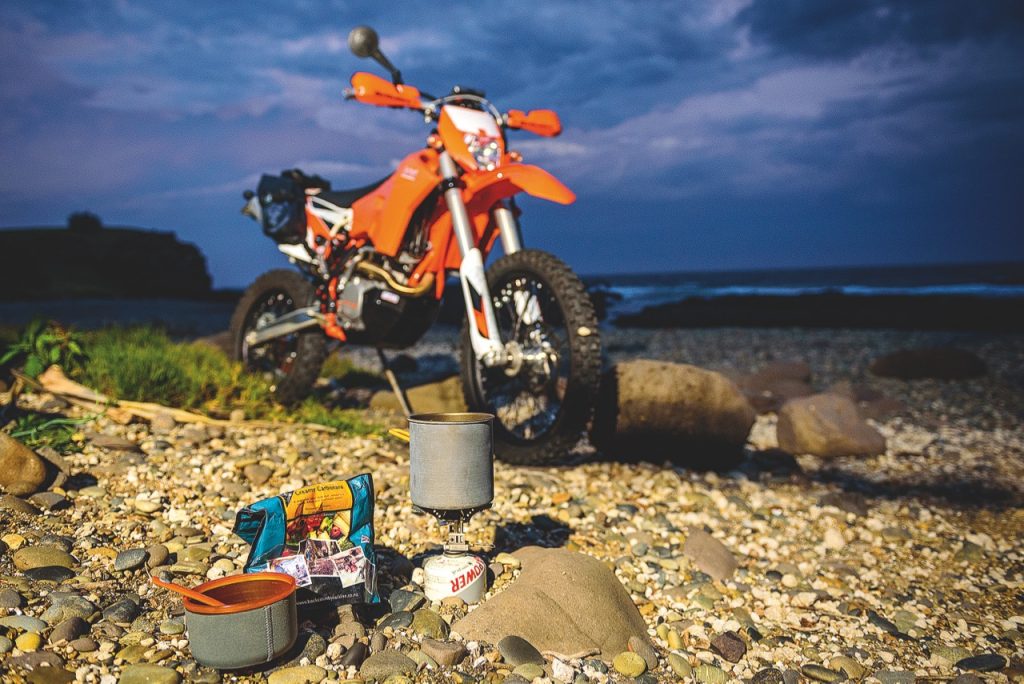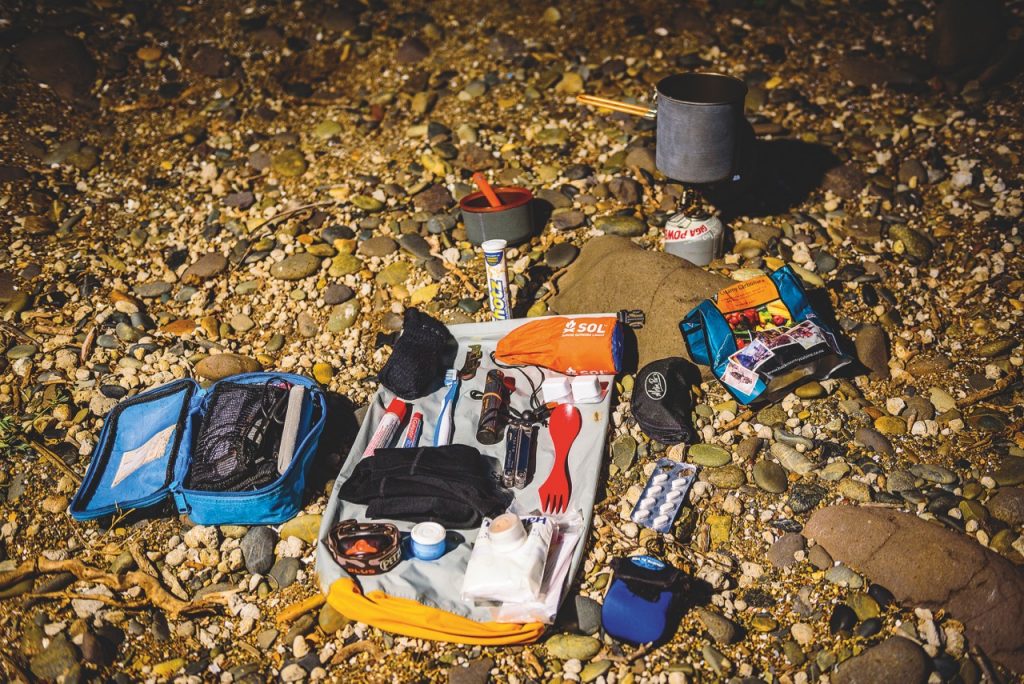Travelling light is a mindset that requires compromise. Danny Wilkinson takes us there.
Somewhere along the line, adventure riding has become synonymous with bikes at the bigger end of the dirt spectrum. This has given rise to a new class of fast, multi-cylinder machines that are capable of monumental skids. No problem here, they are a fantastic way to see the country.
What if you want to explore the trail less travelled? That broken line spanning the weathered creases of an old paper map, one that was likely surveyed before satellites started circling the Earth. Maybe it leads to the remnants of a lost town or a waterfall hidden in the rainforest. Or, it might be a dud and disappear into a tangle of lantana. Either way, in a world that grows smaller by the day, the freedom to explore on a dirt bike is a truly special thing.
Leonardo da Vinci once stated that “Simplicity is the ultimate sophistication” and there are certainly times when a nimble bike, largely unencumbered by luggage, is the only logical solution. Yes, you are going to struggle to maintain a five-star lifestyle on it but, with a bit of thought, the foregone luxury can take you places that few others get to see.
So what do you really need to spend a couple of days exploring?

Bike Basics
It stands to reason that the further you venture from civilisation, the trickier it will be if something breaks down. A decent toolkit is essential and it is a good practice to work on the bike at home using the kit tools to make sure you have the bases covered.
It is possible to cut the weight here by using tools that serve multiple purposes, alloy tyre levers with axle spanners are a good example. Another option may be to carry just a 21” front tube and a patch kit that will work in both wheels most of the time. A tow strap comes in handy too if you are travelling with others.
Water
It is surprising just how much water you can go through in the warmer climates while pushing a bike out of a bog in full riding gear. Bad things happen when dehydration sets in, so make this a priority.
Food
There is no rule that says you need to cook when camping. A warm meal at the end of the day goes down well, though, and can be as simple as a can of beans heated over a couple of hexamine tablets. Camped by the ocean, watching the waves carve through the moonlight, everything will taste good, so keep it simple. Dehydrated camp meals are a step up from this, requiring boiling water. Foldable titanium stoves are tiny and, combined with a small gas canister, will keep you going for a long time. A spork, army can opener and a tiny canister of dishwashing liquid complete the camp kitchen.
Shelter
At a pinch you can generally get by with an emergency bivvy and a decent fire. It won’t be the best nights’ sleep so there are a couple of options that are both light and compact. Hammock tents are brilliant when the environment is suitable (ie you have something to tie them to). They are surprisingly comfortable and keep you off the ground so there is no need for a bedroll. Combine this with a lightweight sleeping bag in the warmer climates and you are pretty well set. In open ground, a lightweight tent (many are down around the 1kg mark) and an Exped bedroll make for accommodation that will outdo most pub beds.
First Aid
Stashing some basic first aid supplies together with a few survival items (such as water purifiers, fire lighters etc) is good insurance. Paw paw cream is a handy inclusion here as it works on various ailments that are common amongst outdoor pursuits (including monkey butt).

Clothing
If you are going where no man has gone for a long time, do you really need fresh clothes when you get there? Far from being the itchy woollen jumpers of your youth, ultra-fine merino base layers can be worn for days on end without accumulating odour and can easily be washed out in a creek, drying again by the morning. Fresh socks are the exception, so find room to stash a pair or two if possible.
Toiletries
Non-riding spouses may dispute this, but personal hygiene is a secondary consideration on the trail. A toothbrush (shortened if you are really serious) and an almost empty tube of toothpaste are all you really need. As a side benefit, after two or three days like this you will smell so bad that the mossies will leave you alone!
Fuel
Even if your exploration doesn’t involve exotic locations in far-off places, fuel capacity is your friend and the best place for fuel is in the tank. Fuel bladders come in handy on long trips but if your sense of curiosity sees you venturing further than the standard tank’s range on a regular basis, an aftermarket tank is a really good investment. They are safer and the bike will continue to handle the way it should.
Communication
Common sense dictates that if you are going to set out on a multi-day exploration, it is a good idea to tell someone which way you are heading. But what about that trail that looks promising and takes you in the opposite direction? Or those big, grey storm clouds to the south when there is clear sky and rolling hills to the north? Spot Trackers are a great backup in these situations. They drop a point every 10 minutes and, for family watching at home, they are good peace of mind. With customisable messages on the newer models, it is possible to let those at home know that you are safe even when mobile phone reception is lacking.
How to Carry it
Beware of cavernous panniers because they are a vacuum and will soon be filled. For the odd expedition into the unknown, it is entirely possible to carry all of the kit listed in a medium-sized backpack. Transferring some of the weight to the bike does make life easier on the rider. Building a system of dry bags to store it in will not only keep gear free from moisture but will allow you to find things more easily.
YOUR ADV CHECKLIST
- Hammock / tent
- Sleeping mat
- Sleeping bag
- Toiletries (toothbrush and toothpaste)
- Food
- Cook pot, gas stove, canister, detergent, spork, bag for rubbish
- Hydration bladder & extra water
- Clear goggle lense
- First aid kit (including paw paw cream and panadol etc)
- Bug spray
- Toilet paper
- Headlamp
- Water purifiers
- Lighter or flint
- Cash
- Maps
- Thermals
- Trail snacks
- Tools (including zip-ties, quick steel, tyre pressure gauge, spark plug spanner, tube/s, pump, spare nuts and bolts)
- Multitool
- Dry bags or zip lock bags for electronics
- Spare earplugs
- Spot Tracker
- Tow strap
Danny Wilkinson
